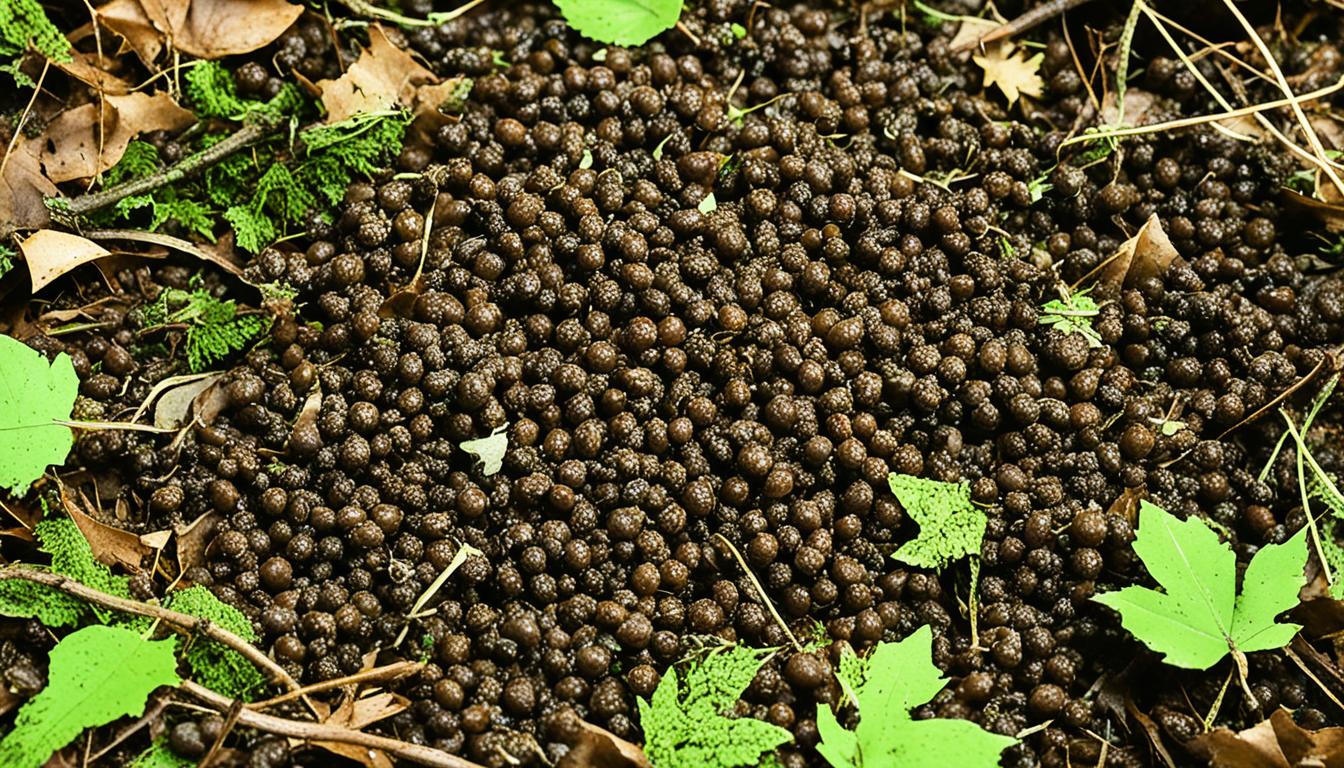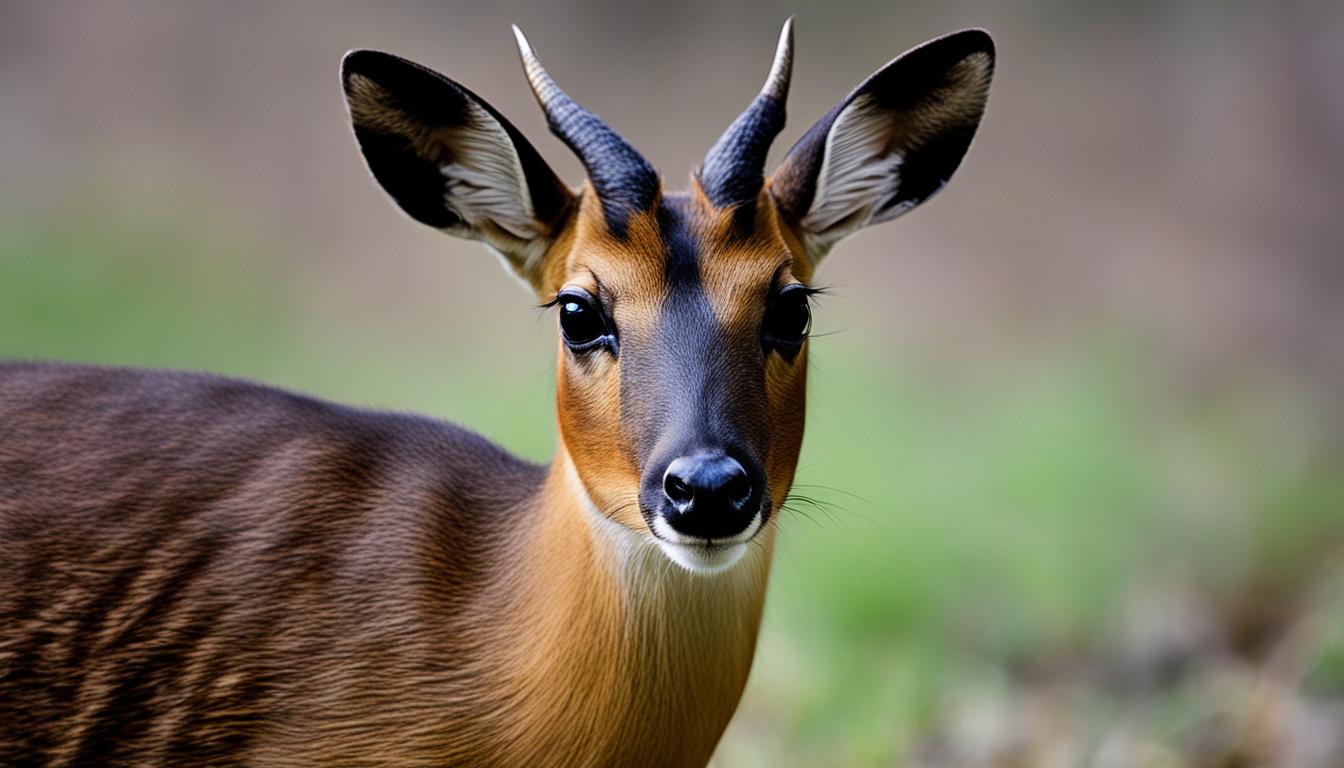Hunting is an exciting and rewarding experience that involves expertise and understanding. Have you ever considered how knowing deer anatomy can greatly improve your hunting success? Recognizing the key organs of a deer and where to aim for a humane and ethical kill can help hunters achieve a swift and efficient harvest.
Knowing the anatomy of a deer, including the heart, lungs, stomach, liver, and intestines, is essential for making ethical shots. By aiming for the right target, hunters can minimize suffering and make quick recoveries. In this article, we will explore the different shot placements and provide valuable insights into where to shoot a deer for a clean and ethical kill.
Key Takeaways:
- Understanding deer anatomy is crucial for ethical hunting.
- Knowing the vital organs helps hunters make clean and effective shots.
- Shot placement plays a significant role in minimizing suffering and ensuring a quick recovery.
- Different shot placements are suitable for various angles and situations.
- Respecting and understanding the anatomy of deer improves hunting skills and promotes ethical practices.
The Heart Shot
A heart shot on a deer is lethal and can result in a quick kill. However, it may not always provide the best blood trails. When a bullet or broadhead penetrates the heart, it often also pierces the lungs, which helps ensure a quicker recovery of the animal. A well-placed heart shot requires a sufficient caliber bullet to penetrate the shoulder blade. It’s important to consider the potential loss of meat when using larger bullets.
When aiming for a heart shot, hunters need to be mindful of the deer’s anatomy. The heart is located in the chest cavity, nestled behind the shoulder blade. It is a vital organ responsible for pumping oxygenated blood to the rest of the body. A well-placed shot that targets the heart can immediately incapacitate the deer, leading to a clean and ethical kill.
A heart shot, when executed properly, can deliver a quick and humane kill. It is essential for hunters to have a good understanding of deer anatomy and shot placement to ensure they hit the heart with precision.
However, it is important to note that a heart shot may not always provide the best blood trails. Since the bullet or broadhead may also pierce the lungs, blood trails can be less pronounced compared to other shot placements. This can make tracking the deer more challenging, especially in dense vegetation.
The Lung Shot
The lungs provide a large target for both rifle hunters and bowhunters. A bullet or broadhead that enters the lungs will make it difficult for the deer to breathe, often resulting in a quick kill. However, incomplete pass-through shots or clipping the lungs may lead to poor blood trails and a more difficult-to-track animal. It’s crucial to aim for the middle of the lung area for an effective lung shot.
When executing a lung shot, hunters should have a clear understanding of deer anatomy. The lungs are located in the chest cavity, just behind the shoulder blades. Take into account the specific placement in relation to the deer’s body size and angle of the shot.
A rifle or broadhead with ample penetration capabilities is essential for a lung shot. It’s important to select the appropriate ammunition or broadhead for the chosen weapon. Rifles with a high muzzle velocity and sufficient power are ideal for achieving a clean lung shot. For bowhunters, a broadhead with good cutting diameter and sharpness will increase the chances of a successful lung shot.
By aiming for the middle of the lung area, hunters can increase the likelihood of hitting the vital organs while avoiding clipping the lungs. This will result in a quick kill and minimize the risk of a wounded deer fleeing to a hard-to-find location.
Remember, even with a precise lung shot, it’s crucial to track the deer after the shot to ensure a successful recovery. Watch for signs of a clean hit, such as a hunched posture, short-run distance, or visible blood trails. These indicators will aid in locating the deer and completing the harvest.
Benefits of a Lung Shot
A lung shot offers several advantages for both rifle hunters and bowhunters. Here are some key benefits:
- The lungs present a large target area, increasing the chances of a successful shot.
- When the lungs are damaged, the deer’s ability to breathe is compromised, leading to a quick kill.
- If the shot is precise and the bullet or broadhead fully penetrates, the deer will leave a clear blood trail, making tracking and recovery easier.
- A lung shot typically results in minimal meat loss compared to other shot placements.
Keep in mind that shot placement is crucial and can vary depending on the deer’s position and angle. It’s essential to practice ethical hunting and make every effort to ensure a clean and humane kill for the benefit of both the hunter and the deer.
| Lung Shot | Advantages |
|---|---|
| Large target area | Increases chances of success |
| Disrupts deer’s ability to breathe | Results in a quick kill |
| Potential for clear blood trails | Eases tracking and recovery |
| Minimal meat loss | Compared to other shot placements |
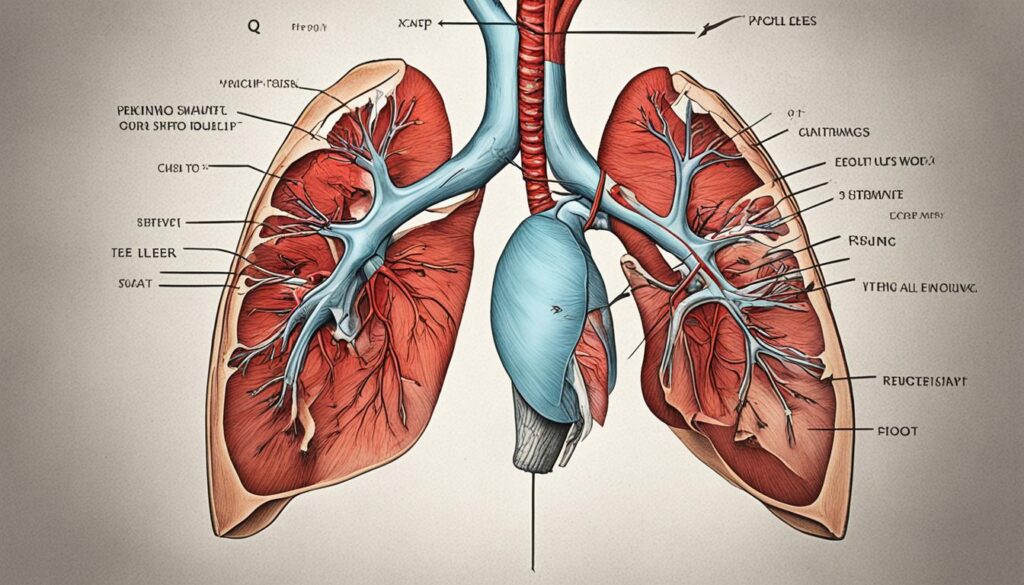
The Neck Shot
A neck shot is a controversial shot placement that aims to sever the arteries in the neck of a deer. If executed correctly, it can be a lethal and bloody shot that causes minimal damage to the meat. However, this shot is not without its risks and ethical considerations.
Understanding deer anatomy is crucial when considering a neck shot. The neck contains vital structures such as arteries, veins, and the spinal cord. If the shot severs the arteries, it can result in rapid blood loss and a quick kill. However, if the spine is not severed, the deer may still be able to escape or become difficult to recover.
It’s important to note that taking a neck shot with a gun is risky and not recommended for most hunters. The small target area and the potential for missing or hitting non-lethal areas increase the risk of wounding rather than cleanly killing the animal. Bowhunters should also avoid neck shots due to the difficulty of making an accurate and lethal shot.
“A neck shot should only be attempted by experienced hunters who have a thorough understanding of deer anatomy and are confident in their marksmanship skills,” advises renowned hunter and author, Mark Johnson.
When considering shot placement, hunters should prioritize the most ethical and effective methods to ensure a clean and humane kill. While a neck shot may seem like an attractive option for preserving meat, the potential risks and uncertainties associated with this shot make it less favorable compared to other shot placements.
Remember, taking an ethical shot and having a deep understanding of deer anatomy are the foundations of responsible and humane hunting.
Comparison of Shot Placements
| Shot Placement | Advantages | Disadvantages |
|---|---|---|
| Heart Shot | Quick kill | Potential loss of meat |
| Lung Shot | Large target area, difficulty breathing | Poor blood trails if incomplete pass-through shots |
| Neck Shot | Lethal, minimal meat damage | Risk of non-lethal shots, difficult recovery |
| Brain Shot | Immediate drop, no meat loss | Difficult shot, potential for unnecessary suffering |

The Brain Shot
A brain shot is a highly effective method of taking down a deer with precision and immediate results. However, it is considered one of the most difficult shots to execute due to the small target area.
When aiming for a brain shot, the objective is to hit the deer’s brain, instantly incapacitating the animal. This shot ensures a clean and ethical kill, leaving no room for suffering. However, accuracy is paramount, as a misplaced shot can cause unnecessary harm and make it challenging to recover the deer.
The brain shot offers a significant advantage in terms of meat preservation. Unlike shots that might affect vital organs or muscle tissue, the brain shot causes no loss of meat.
Making a brain shot requires a steady hand, keen eye, and thorough knowledge of deer anatomy. It is crucial to understand the precise location of the brain within the deer’s skull to maximize the chances of a successful shot.
“Aiming for a brain shot requires skill and precision. It may be a difficult shot to master, but it guarantees a quick and humane kill for the deer.” – Expert Hunter
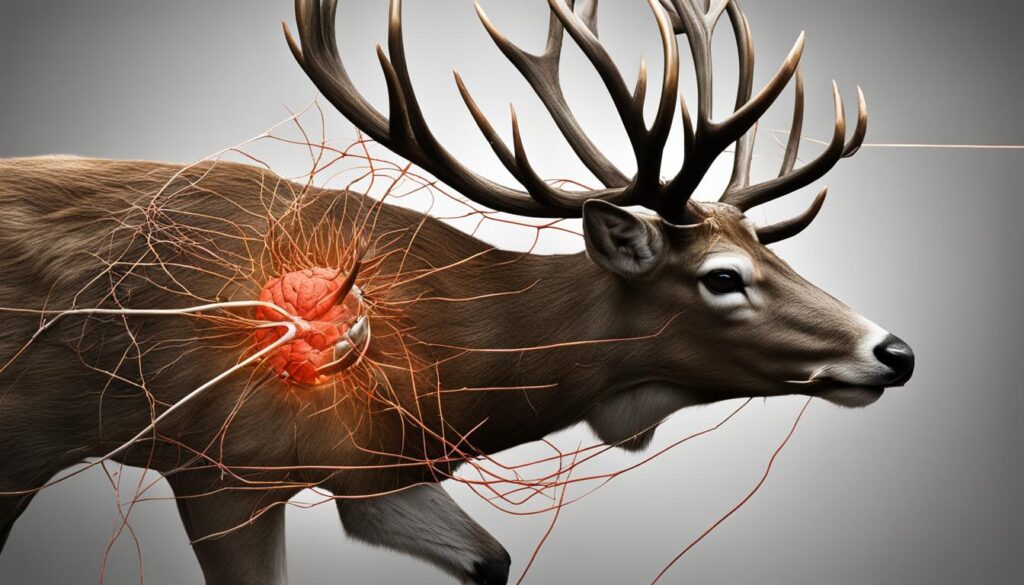
Deer Digestive System
Deer have a four-chamber stomach that plays a crucial role in their digestion process. Each chamber serves a specific purpose in breaking down their food and extracting nutrients.
The first chamber is the rumen, where food is swallowed and partially broken down by digestive bacteria. This chamber acts as a fermentation vat, allowing bacteria to break down cellulose and other tough plant materials that deer consume in their diet.
After spending some time in the rumen, the partially digested food is regurgitated and chewed again. This process, known as “chewing the cud,” allows deer to further break down the food and improve digestion.
The regurgitated food then moves into the next chamber, called the reticulum. The reticulum acts as a strainer, separating larger indigestible particles from the smaller digestible ones.
From the reticulum, the smaller particles pass into the omasum. The omasum is responsible for absorbing water from the food, ensuring the deer stays hydrated even when water sources are limited.
Finally, the food enters the last chamber, called the abomasum. The abomasum is comparable to the stomach in humans and other animals, producing acid to further break down the food and releasing digestive enzymes to extract nutrients. Once the food is broken down, it passes into the intestines for further absorption and elimination.
Understanding the different chambers of the deer’s digestive system helps us appreciate the incredible adaptability of these animals to their plant-based diet. It also highlights the importance of providing deer with a varied and nutritionally-rich diet in the wild.

Deer Legs
Despite their thin appearance, deer legs possess remarkable speed and power. While they cannot maintain top speed for long distances, deer can run up to 40 miles per hour in short bursts. The hind legs provide the power for their speed and jumping ability. Deer also have tarsal glands on the inside of their hind legs, which secrete a musky scent used for communication during the breeding season.

Deer legs are a marvel of nature, enabling these graceful creatures to navigate their environment with agility and grace. Despite their lightweight and slender appearance, deer possess an incredible burst of speed and power, allowing them to outrun potential threats and cover vast distances when necessary.
The hind legs, in particular, play a crucial role in powering the deer’s locomotion. These muscular limbs propel the animal forward with explosive force, enabling them to reach impressive speeds. While they cannot sustain their top speed for long durations, deer can sprint up to 40 miles per hour in short bursts, evading predators and finding safety in a matter of seconds.
In addition to their speed, deer legs also contribute to their remarkable jumping ability. The combination of their powerful hind legs and flexible joints enables them to effortlessly leap over obstacles, such as fallen logs or fences, with grace and ease.
It is worth mentioning that deer possess tarsal glands on the inside of their hind legs, which serve an additional purpose beyond locomotion. These glands secrete a musky scent that is used for communication during the breeding season. This scent is detectable by other deer and plays a crucial role in mating rituals and interactions.
Antlers
Male deer have impressive antlers on their heads, which are composed of live tissue made of bone. Antlers have the fastest tissue growth rate of any animal, and they undergo a remarkable transformation throughout the year. During the spring, whitetail antlers can grow at an average rate of up to two inches per week.
During the growth phase, antlers are covered in a soft, velvet-like substance. This velvet supplies vital nutrients and blood flow to support the rapid growth of the antler. As the antlers mature, the velvet begins to dry and peel.
Once autumn arrives, antler growth comes to a halt, and bucks shed their antlers between January and March. The shedding process is facilitated by specialized cells that dissolve the attachment between the antlers and the deer’s head. Shed antlers pave the way for the growth of new ones during the following year.

Male deer use their antlers for various purposes, including display, dominance battles, and attracting mates during the rutting season.
Whitetail Ears and Hearing
Whitetail deer have very sensitive hearing, which plays a critical role in their survival. The muscles attached to their ears allow them to rotate and hear in multiple directions without moving their heads. This keen sense of hearing helps them detect potential dangers, such as human presence or predator sounds.
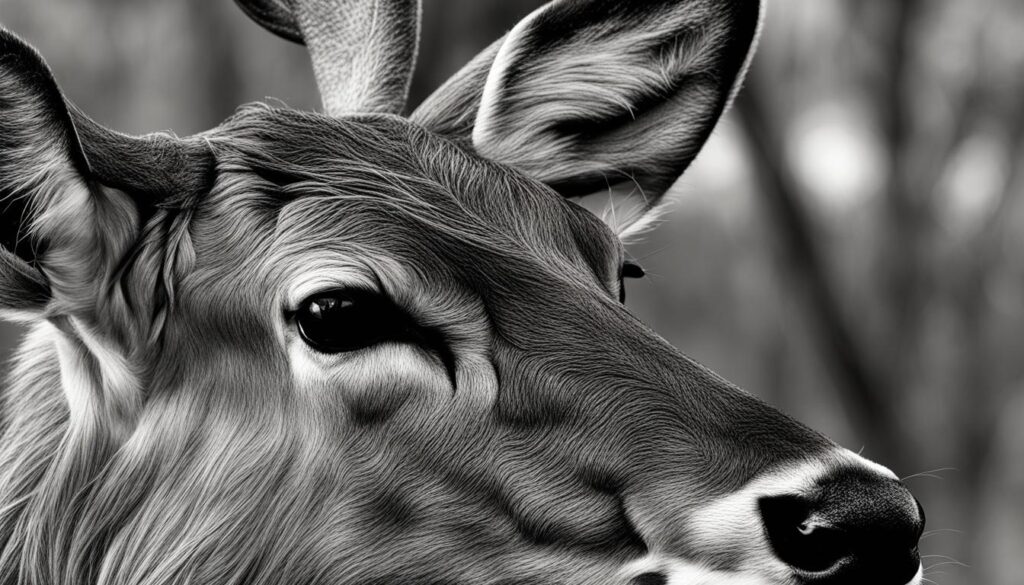
Eyesight
Deer have a strong sense of eyesight, surpassing human vision in certain aspects. They rely on their eyesight, along with their sense of smell and hearing, to detect and react to potential threats. While not as acute as their hearing, their eyesight helps them identify movement and objects in their surroundings.

Eyesight: Key Points
- Deer possess strong eyesight, which complements their other senses in threat detection.
- Their vision allows them to identify movement and objects in their surroundings.
- While they cannot discern colors as vividly as humans, they have excellent night vision.
- Deer’s eyes are located on the sides of their head, providing a wide field of view.
- They have a reflective layer behind their retinas, called the tapetum lucidum, which enhances their ability to see in low light conditions.
Eyesight: Exploring Deer’s Vision
Deer have adapted to their environment with eyes designed for survival. While their color vision is limited compared to humans, their visual acuity excels in low light conditions. Their eyes are positioned more towards the sides of their heads, allowing them to have a wide field of view and detect movement from different angles. This positioning is particularly advantageous for prey animals, helping them spot potential predators. Additionally, deer have a reflective layer behind their retinas, called the tapetum lucidum, which enhances their night vision by reflecting light back through the retina for a second chance at capturing an image.
Deer rely on their eyesight to detect and react to potential threats in their environment.
Comparing Deer’s Vision with Humans
While deer have superior night vision and the ability to detect movement more effectively than humans, their visual capabilities fall behind when it comes to color perception. Deer’s eyes contain fewer color-detecting cells, giving them limited color vision. The lack of precise color discrimination allows deer to blend in with their surroundings, enhancing their camouflage and evasive abilities. With their keen eyesight, deer can spot predators or humans at a distance, making it crucial for hunters to remain concealed and minimize their movements.
| Aspect | Deer Vision | Human Vision |
|---|---|---|
| Color Perception | Limited color vision | Vivid color perception |
| Low Light Vision | Excellent night vision | Relatively poor night vision |
| Field of View | Wide field of view (roughly 270 degrees) | Narrower field of view (roughly 180 degrees) |
| Depth Perception | Good depth perception | Superior depth perception |
Shot Placement Guide
Understanding shot placement is essential for ethical hunting and ensuring the recovery of a downed animal. Different angles and situations may require specific shot placement considerations. Broadside shots offer the best target area for hitting vital organs, whereas quartering-away shots require aiming further back. Frontal shots and head/neck shots are not recommended due to the risk of obstructing bones and limited target areas.
| Shot Placement | Description |
|---|---|
| Broadside Shot | Aim behind the shoulder to target the heart and lungs, ensuring a quick and humane kill. This shot provides the biggest target area. |
| Quartering-Away Shot | Aim further back towards the liver and other vital organs to account for the angle of the deer. This shot placement allows for a lethal hit even if the bullet or arrow doesn’t fully penetrate the body. |
| Frontal Shot | Not recommended due to the thick bones and limited target area. The risk of wounding the deer without causing a quick kill is high. |
| Head/Neck Shot | Also not recommended due to the risk of obstructing bones and limited target area. These shots should only be attempted by highly skilled marksmen. |
Remember, ethical hunting involves making clean kills and ensuring the animal’s welfare. Proper shot placement based on deer anatomy is crucial for achieving this goal.
Conclusion
Understanding deer anatomy is paramount for ethical hunting and ensuring quick and humane kills. Hunters must have a comprehensive knowledge of the deer’s vital organs, such as the heart and lungs, to achieve the most effective shot placement.
In addition to understanding deer anatomy, hunters should also familiarize themselves with other aspects of the animal’s physiology. Knowing about the deer’s digestive system, legs, antlers, ears, and eyesight can contribute to becoming a well-rounded and knowledgeable hunter.
By respecting and understanding the anatomy of these majestic creatures, hunters can strive for clean and ethical kills. This not only ensures a quick and humane death for the deer but also reduces the risk of a wounded animal suffering unnecessarily.

